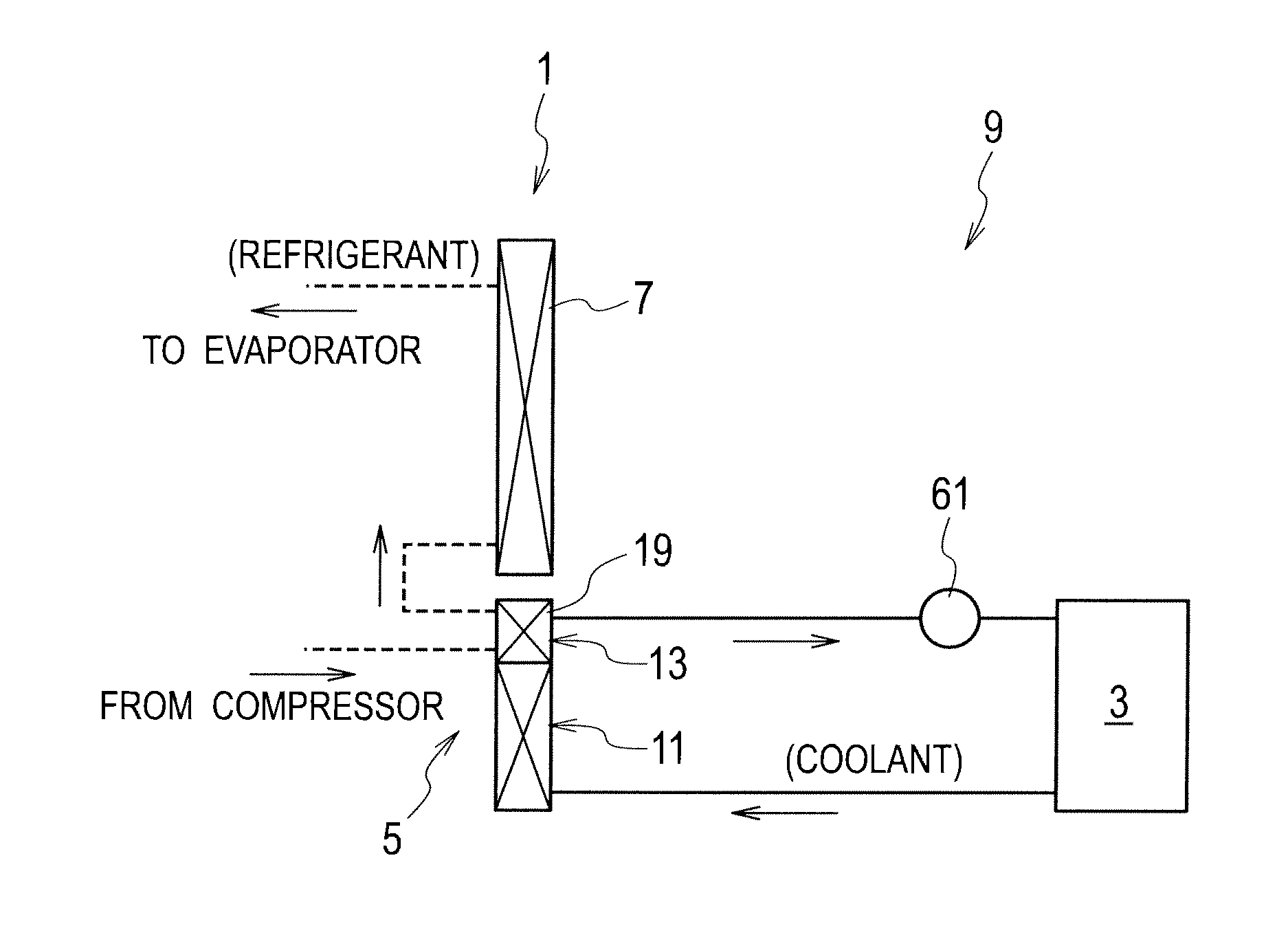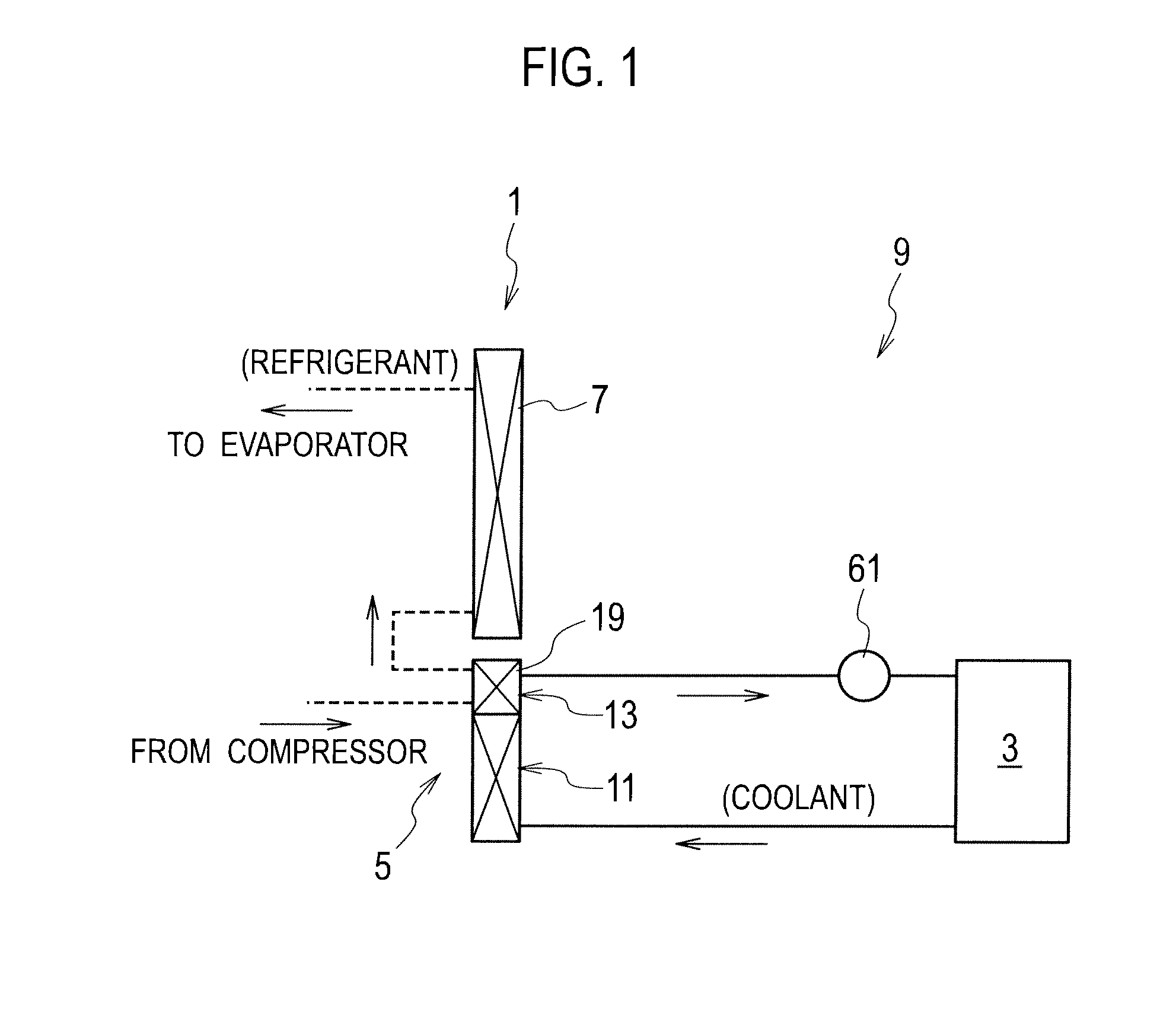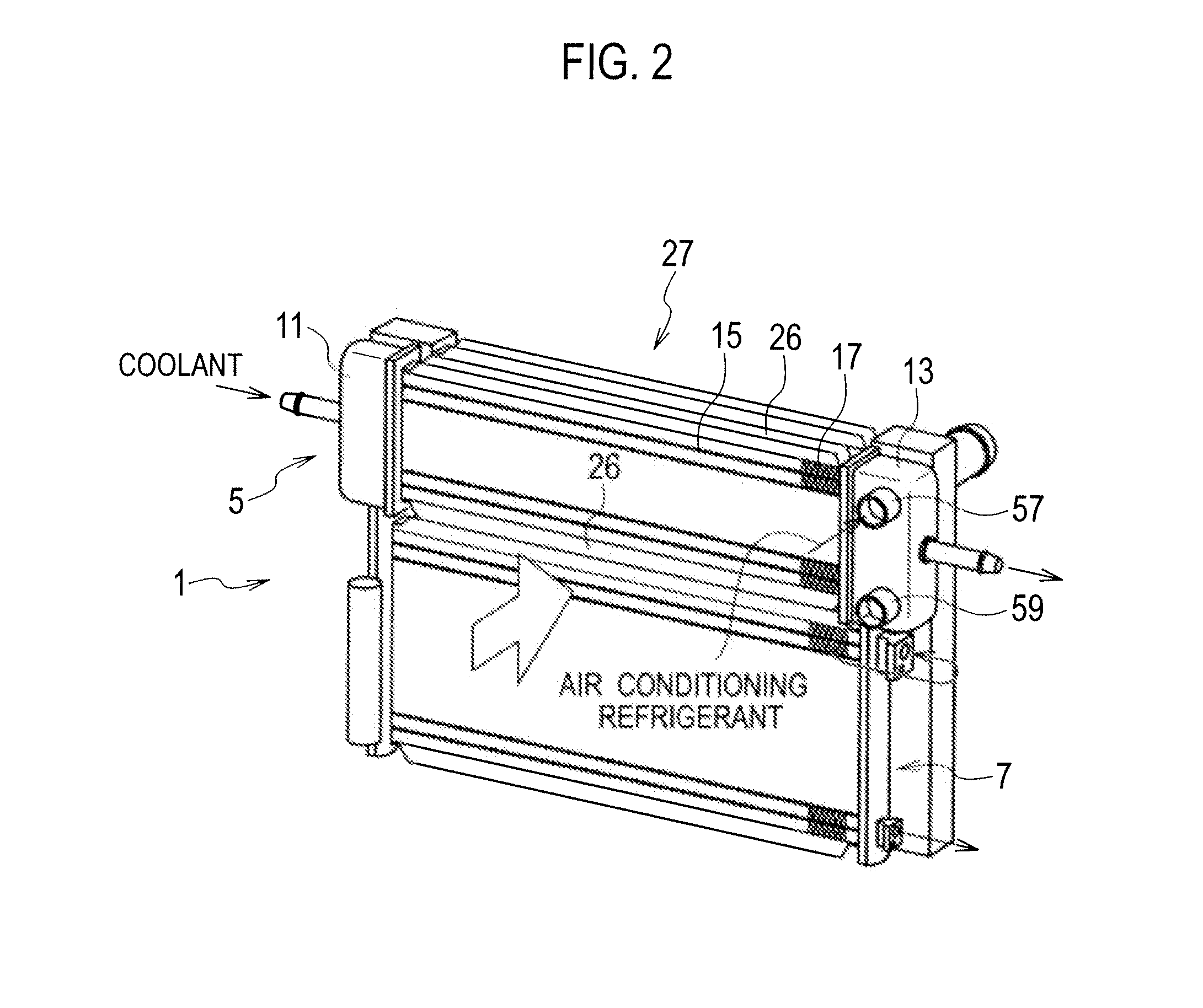Combined heat exchanger
a heat exchanger and heat exchange technology, applied in indirect heat exchangers, lighting and heating apparatus, stationary conduit assemblies, etc., can solve the problems of heat exchange efficiency degradation, performance and reliability degradation of cooling systems, etc., and achieve the effect of reducing the pressure on the shell tube, improving heat exchange efficiency and reducing the effect of oil-staying
- Summary
- Abstract
- Description
- Claims
- Application Information
AI Technical Summary
Benefits of technology
Problems solved by technology
Method used
Image
Examples
first embodiment
[0033]A combined heat exchanger 1 according to a first embodiment will be explained with reference to FIGS. 1 to 7. As shown in FIG. 1, the combined heat exchanger 1 is used in a cooling system 9 in a hybrid electric vehicle that has an engine (internal combustion engine: not shown) and an electric motor 3 as sources of a driving force.
[0034]The combined heat exchanger 1 is used in the cooling system 9 that includes a sub-radiator 5 (first air-cooled heat exchanger) and a condenser 7 (second air-cooled heat exchanger) as shown in FIG. 1. The sub-radiator 5 cools coolant for the drive motor 3 and control devices (heat generators other than the engine) such as an inverter or a converter. On the other hand, the condenser 7 cools air-conditioning refrigerant.
[0035]The sub-radiator 5 includes an upstream tank 11, a downstream tank 13, flat tubes 15 (flow channel members), heat release fins 17, and a water-cooled heat exchanger 19 as shown in FIGS. 1 to 3. The coolant flows into the upstr...
second embodiment
[0052]A combined heat exchanger according to a second embodiment will be explained with reference to FIGS. 8(a) and 8(b).
[0053]In the combined heat exchanger according to the present embodiment, an inner fin (refrigerant-passage unit) 101 fixed within the shell tube (refrigerant-passage unit) 21 is extended to circularly curved portions located at its both ends in the flow direction of the refrigerant. In addition, a pair of slits 103 extended from the inflow hole 51 is formed on both sides of the inflow hole 51. Similarly, a pair of slits 105 extended from the outflow hole 53 is formed on both sides of the outflow hole 53. The inner fin 101 is brazed with the shell tube 21 at its top edges of the corrugated shape and at its both ends in the flow direction. Therefore, anti-pressure strength of tube is ensured to its both ends in the flow direction.
[0054]The slits 103 and 105 are disposed to extend over some of the grooves 55. The refrigerant is spread (from the inflow hole 51: the s...
third embodiment
[0057]A combined heat exchanger according to a third embodiment will be explained with reference to FIGS. 9(a) and 9(b).
[0058]In the combined heat exchanger according to the present embodiment, notches 153 and 155 are formed on the inner fin (refrigerant-passage unit) 151. The upper notch 153 is provided in the width direction along the end 157 (FIG. 4) of the shell tube 21 on a side of the inflow ports 43 and 45. Similarly, the lower notch 155 is provided in the width direction along the end 159 (FIG. 4) of the shell tube 21 on a side of the outflow ports 47 and 49.
[0059]In the combined heat exchanger according to the present embodiment, the notches 153 and 155 are disposed to extend all of the grooves 55. The refrigerant is spread (from the inflow hole 51: the notch 153) in an almost perpendicular direction (in the width direction) to its flow direction due to the notches 153 and 155, and then collected (to the notch 155: the outflow hole 53). Since the refrigerant flows in a full...
PUM
 Login to View More
Login to View More Abstract
Description
Claims
Application Information
 Login to View More
Login to View More - R&D
- Intellectual Property
- Life Sciences
- Materials
- Tech Scout
- Unparalleled Data Quality
- Higher Quality Content
- 60% Fewer Hallucinations
Browse by: Latest US Patents, China's latest patents, Technical Efficacy Thesaurus, Application Domain, Technology Topic, Popular Technical Reports.
© 2025 PatSnap. All rights reserved.Legal|Privacy policy|Modern Slavery Act Transparency Statement|Sitemap|About US| Contact US: help@patsnap.com



